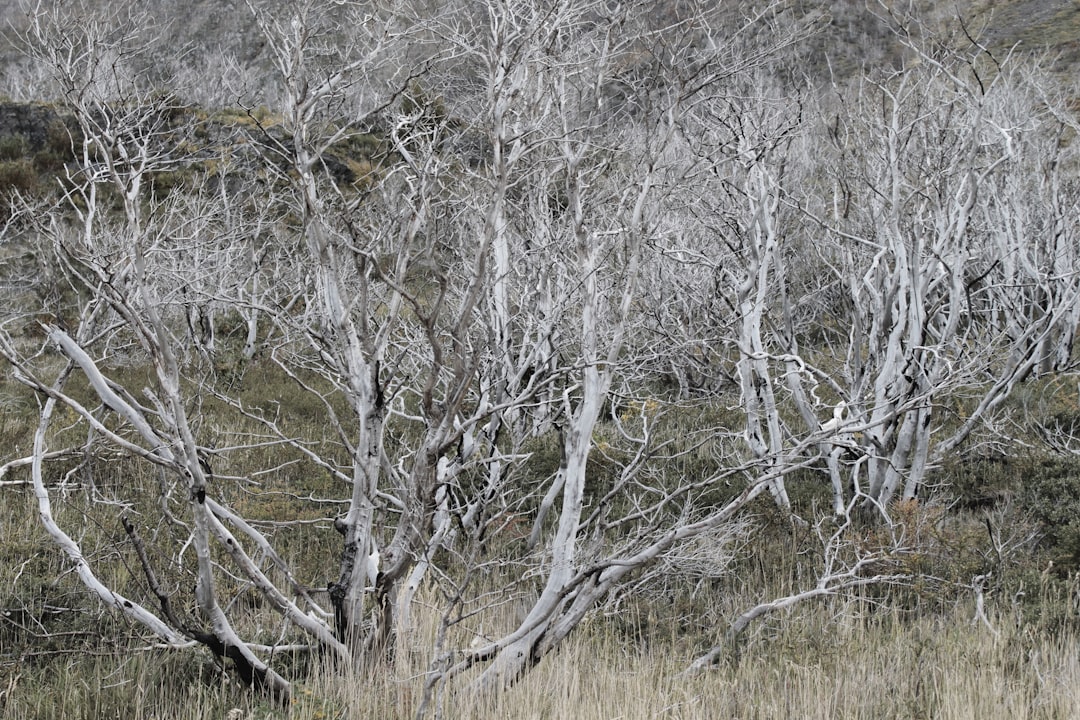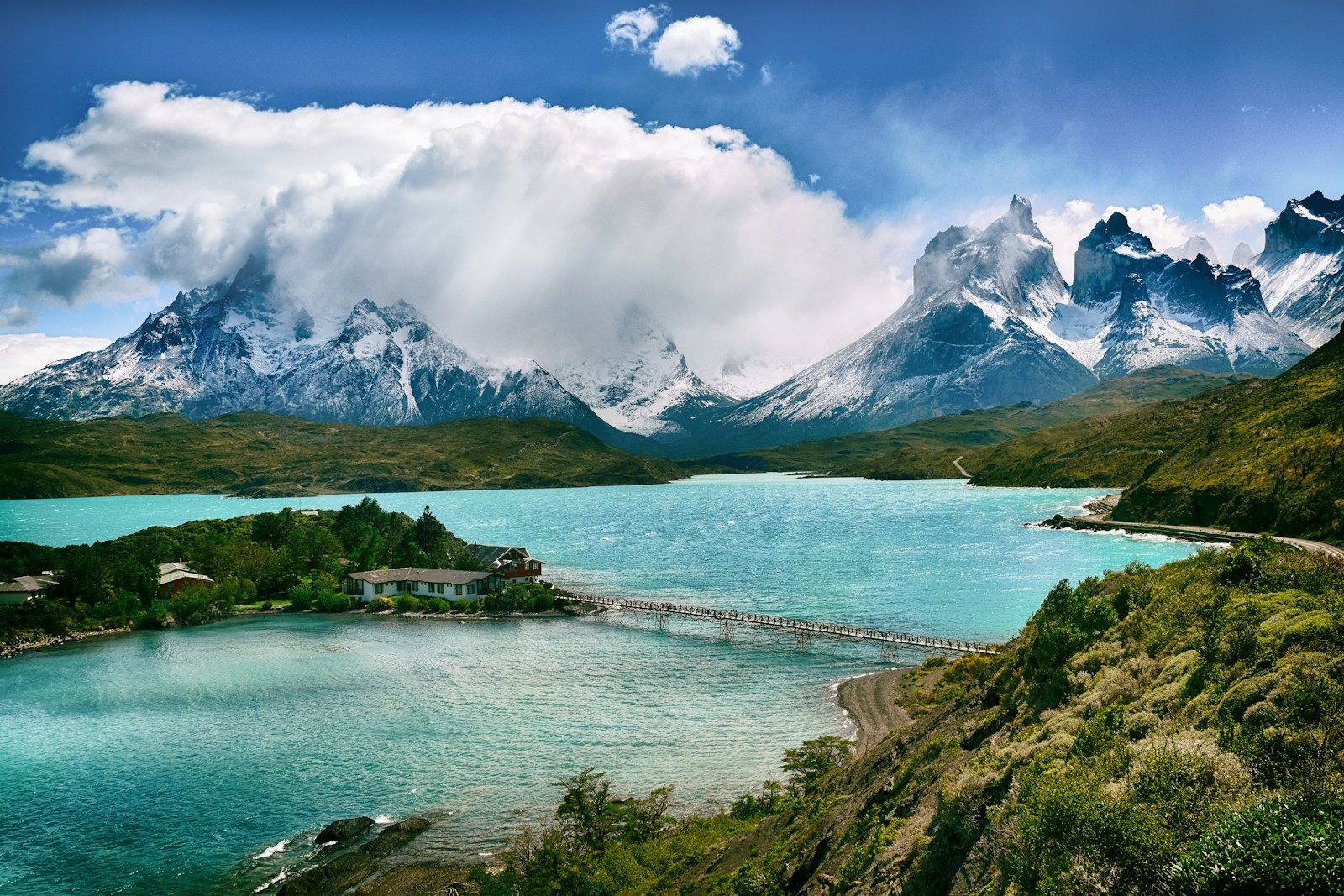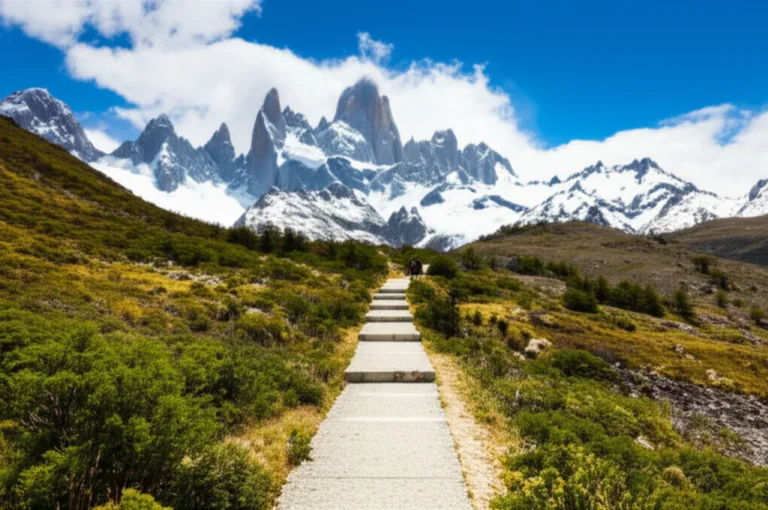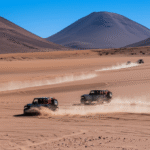Support our educational content for free when you purchase through links on our site. Learn more
When to Visit Chile’s National Parks for Hiking: 9 Best Seasons (2025) 🌄

Imagine standing at the base of the iconic Torres del Paine granite towers, the wind whipping around you as the sun paints the sky in fiery autumn hues. Or picture yourself at Lake Chungara in Lauca National Park, surrounded by flamingos and snow-capped volcanoes under a crystal-clear spring sky. But when exactly should you plan your trip to catch these breathtaking moments? Timing your visit to Chile’s national parks can make all the difference between battling crowds and weather woes or enjoying serene trails and vibrant wildlife.
In this ultimate guide, we unravel the best times of year to visit Chile’s top parks like Torres del Paine and Lauca for hiking and outdoor adventures. From understanding Patagonia’s unpredictable weather to acclimatizing at high altitudes in the Andes, we share insider tips, seasonal highlights, and personal stories from our Chile Vacay™ team. Ready to discover the perfect season for your next epic trek? Let’s dive in!
Key Takeaways
- Spring (Sep-Nov) and autumn (Mar-May) are the prime seasons for mild weather, fewer crowds, and stunning natural displays in Chile’s national parks.
- Summer offers long daylight but brings crowds and unpredictable weather, especially in Torres del Paine.
- Winter is best for solitude and snowy landscapes but limits trail access in southern parks.
- Lauca National Park requires altitude acclimatization due to its high elevation but can be visited year-round.
- Packing layered, weatherproof gear and planning ahead with permits and bookings are essential for a smooth adventure.
- Guided tours offer convenience and local expertise, while independent hiking gives flexibility and budget control.
👉 CHECK PRICE on:
- Hiking boots and waterproof jackets from Salomon and Arc’teryx
- Glamping at EcoCamp Patagonia for a unique Torres del Paine experience
Ready to plan your perfect Chilean trek? Keep reading for all the juicy details and insider secrets!
Table of Contents
- ⚡️ Quick Tips and Facts About Visiting Chile’s National Parks
- 🌎 Chile’s National Parks: A Natural Wonderland for Outdoor Enthusiasts
- 1️⃣ When to Visit Torres del Paine: Best Seasons for Hiking and Wildlife
- 2️⃣ Optimal Times for Exploring Lauca National Park: Weather, Flora & Fauna
- 3️⃣ Seasonal Highlights: What Each Season Offers in Chile’s Parks
- 4️⃣ Weather Patterns and Trail Conditions: Planning Your Trek Smartly
- 5️⃣ Avoiding the Crowds: Insider Tips for a Peaceful Park Experience
- 6️⃣ Gear and Preparation: What to Pack for Chile’s Varied Climates
- 7️⃣ Guided Tours vs. Independent Hiking: Choosing Your Adventure Style
- 8️⃣ Wildlife Watching: Best Times and Spots in Torres del Paine and Lauca
- 9️⃣ Cultural Festivals and Local Events Near the Parks to Time Your Visit
- 🔍 Understanding Altitude and Acclimatization in Lauca National Park
- 🌟 Hidden Gems: Lesser-Known Trails and Seasons for Adventure Seekers
- 🛶 Beyond Hiking: Seasonal Outdoor Activities in Chile’s National Parks
- 📝 Planning Your Trip: Booking, Permits, and Park Regulations
- 🎒 Personal Stories: Our Most Memorable Seasonal Hikes in Torres del Paine and Lauca
- 🔚 Conclusion: Timing Your Chile National Park Adventure for Maximum Fun
- 🔗 Recommended Links for Planning Your Chile National Park Visit
- ❓ FAQ: Your Burning Questions About Visiting Chile’s National Parks Answered
- 📚 Reference Links and Resources for Deeper Exploration
⚡️ Quick Tips and Facts About Visiting Chile’s National Parks
Ready to lace up your hiking boots and explore Chile’s breathtaking national parks? Before you dive into the wild, here are some quick nuggets from the Chile Vacay™ team to get you started:
- ✅ Best overall seasons: March to May (autumn) and September to November (spring) offer mild weather, fewer crowds, and stunning landscapes.
- ❌ Peak summer (December to February): Warmest, but expect crowds and occasional unpredictable weather, especially in Patagonia.
- ✅ Winter (June to August): Great for solitude but cold, with some trails closed in southern parks like Torres del Paine.
- 🌡️ Altitude matters: Lauca National Park sits high (over 4,000m), so acclimatize properly to avoid altitude sickness.
- 🐾 Wildlife spotting: Spring and autumn are prime for seeing guanacos, condors, flamingos, and even elusive pumas.
- 🏕️ Book early: Torres del Paine accommodations and campsites fill up fast during peak seasons.
- 🎒 Pack layers: Weather can flip from sunny to snowy in hours—think Patagonia’s famous four seasons in one day!
- 🌍 Chile’s seasons are opposite to the Northern Hemisphere, so plan accordingly if you’re coming from Europe or North America.
For a broader overview of Chile’s best travel times, check out our detailed guide on What are the best times to visit Chile for a vacation?.
🌎 Chile’s National Parks: A Natural Wonderland for Outdoor Enthusiasts
Chile boasts 41 national parks, 45 reserves, and 17 natural monuments, each offering unique ecosystems from the arid Atacama Desert to the lush Patagonian wilderness. These parks are a playground for hikers, wildlife lovers, and adventure seekers alike.
- Torres del Paine National Park is the crown jewel of Chilean Patagonia, famous for its dramatic granite towers, glaciers, and turquoise lakes.
- Lauca National Park, nestled in the Andes near the Bolivian border, is a high-altitude haven with volcanoes, flamingo-filled lagoons, and indigenous culture.
- Other gems include Villarrica, Puyehue, and Chiloé National Parks, each with distinct climates and activities.
We love how Chile’s parks cater to all levels—from casual day hikes to multi-day treks like the iconic W Trek in Torres del Paine. Plus, the diversity of flora and fauna is staggering, with species adapted to deserts, mountains, and forests.
For more on Chile’s diverse destinations, explore our Destinations category.
1️⃣ When to Visit Torres del Paine: Best Seasons for Hiking and Wildlife
Torres del Paine is a weather wildcard but also a hiker’s paradise. Here’s the lowdown on timing your visit:
| Season | Weather & Conditions | Crowds | Hiking & Wildlife Highlights |
|---|---|---|---|
| Summer (Dec-Feb) | Mild temps (7-15°C), long daylight, windy | High | Best for full W Trek, boat tours, puma sightings |
| Autumn (Mar-May) | Cooler temps, less wind, colorful foliage | Moderate | Stunning fall colors, fewer tourists, good wildlife spotting |
| Winter (Jun-Aug) | Cold, snow on trails, some closures | Low | Quiet, dramatic landscapes, limited hiking |
| Spring (Sep-Nov) | Variable weather, blooming wildflowers | Moderate | Wildflowers, newborn guanacos, good trail conditions |
Pro Tip: We visited Torres del Paine in late March and were blown away by the fiery autumn hues and peaceful trails. The winds were gentler than summer, and we spotted a family of guanacos right by the campsite!
Important: The park entrance fee is about 21,000 CLP (~$29 USD), and you must book accommodations or campsites well in advance, especially in summer.
👉 CHECK PRICE on:
- Hotel Las Torres Patagonia: Booking.com | Expedia
- EcoCamp Patagonia (glamping): Official Website | Tripadvisor
2️⃣ Optimal Times for Exploring Lauca National Park: Weather, Flora & Fauna
Lauca National Park is a high-altitude gem in northern Chile’s Andes, famous for its volcanoes, salt flats, and flamingo colonies. Unlike southern parks, Lauca can be visited year-round, but timing affects your experience:
| Season | Weather & Conditions | Wildlife & Scenery Highlights |
|---|---|---|
| Summer (Dec-Feb) | Mild days (10-20°C), chilly nights, possible afternoon storms | Best for birdwatching, flamingos active |
| Autumn (Mar-May) | Cooler, dry, clear skies | Crisp views of volcanoes, fewer tourists |
| Winter (Jun-Aug) | Cold nights (-10°C), sunny days | Snow-capped peaks, fewer visitors |
| Spring (Sep-Nov) | Warming temps, blossoming flora | Wildflowers bloom, great for photography |
Altitude Alert: Lauca sits above 4,000 meters (13,000 feet), so acclimatization is key. Spend a day in Putre (the nearby town) before hiking to avoid altitude sickness.
Our Chile Vacay™ team loved visiting in October when the wildflowers were in full bloom and the flamingos were nesting peacefully at Lake Chungara.
Entrance: Free, but facilities are minimal—bring your own supplies and plan accordingly.
3️⃣ Seasonal Highlights: What Each Season Offers in Chile’s Parks
Chile’s vast length means seasonal experiences vary dramatically by region. Here’s a quick seasonal snapshot for the national parks:
| Season | Northern Parks (Atacama, Lauca) | Central Parks (Vicente Pérez Rosales) | Southern Parks (Torres del Paine, Patagonia) |
|---|---|---|---|
| Spring | Dry, wildflowers bloom, great for trekking | Mild temps, blooming vineyards | Variable weather, wildflowers, newborn wildlife |
| Summer | Hot days, cooler nights, some storms | Warm, dry, perfect for hiking | Warmest season, long daylight, crowded |
| Autumn | Cooler, dry, fewer tourists | Crisp, colorful foliage | Cooler, less crowded, stunning fall colors |
| Winter | Cold nights, clear skies | Rain and occasional snow | Cold, snow on trails, some closures |
Fun fact: Patagonia’s weather is so famously unpredictable that locals joke about experiencing all four seasons in one day! So always be ready for a weather plot twist.
4️⃣ Weather Patterns and Trail Conditions: Planning Your Trek Smartly
Understanding local weather is crucial for a successful hike. Here’s what we learned from trekking Torres del Paine and Lauca:
- Torres del Paine: Expect strong winds (up to 120 km/h), especially in summer. Trails can be muddy or snowy depending on the season. Always check the CONAF Chile weather updates before heading out.
- Lauca: Dry air and intense sun at high altitude mean sun protection and hydration are non-negotiable. Afternoon thunderstorms can occur in summer.
- Trail conditions: Summer and spring offer the best trail accessibility. Winter may close some paths due to snow or ice, especially in southern parks.
Our tip: Start hikes early in the day to avoid afternoon weather changes and crowds. Carry a GPS or offline map app like Maps.me, as cell coverage is spotty.
5️⃣ Avoiding the Crowds: Insider Tips for a Peaceful Park Experience
If you’re craving solitude, here’s how to dodge the tourist stampede:
- Visit Torres del Paine during shoulder seasons (March-April or September-October). The weather is still decent, but the crowds thin out dramatically.
- Explore lesser-known trails like the Mirador Cuernos or the Pingo Valley in Torres del Paine, which see fewer hikers.
- In Lauca, weekdays and early mornings are quietest. The park is less touristy overall but can get busy during Chilean holidays.
- Consider guided tours with small groups to access hidden spots without the hassle of logistics.
We once stumbled upon a secluded lagoon in Torres del Paine at dawn—no other hikers in sight—pure magic!
6️⃣ Gear and Preparation: What to Pack for Chile’s Varied Climates
Packing for Chile’s national parks is a balancing act between warmth, rain protection, and sun safety. Here’s our ultimate packing checklist:
- Layered clothing: Base layers (merino wool), insulating mid-layers (fleece), and waterproof outer shells (Gore-Tex jackets).
- Hiking boots: Waterproof, broken-in, with good ankle support. Brands like Salomon and Merrell are favorites among Chile Vacay™ hikers.
- Sun protection: High SPF sunscreen, wide-brim hat, and UV-blocking sunglasses.
- Backpack: 30-40L daypack for essentials; larger packs for multi-day treks.
- Hydration system: Water bottles or hydration bladders; water purification tablets for remote areas.
- Trekking poles: Helpful for uneven terrain and altitude hikes.
- Camping gear: If camping, bring a 4-season tent, sleeping bag rated for cold temps, and a sleeping pad.
👉 CHECK PRICE on:
- Salomon Hiking Boots: Amazon | Salomon Official
- Arc’teryx Waterproof Jackets: Amazon | Arc’teryx Official
7️⃣ Guided Tours vs. Independent Hiking: Choosing Your Adventure Style
Wondering whether to go solo or book a guided trek? Here’s the scoop:
| Aspect | Guided Tours | Independent Hiking |
|---|---|---|
| Convenience | ✅ Logistics, permits, transport handled | ❌ You arrange everything yourself |
| Cost | ❌ More expensive | ✅ More budget-friendly |
| Local Knowledge | ✅ Guides share insights on flora, fauna, culture | ❌ You rely on your own research |
| Flexibility | ❌ Fixed itinerary | ✅ Customize your pace and route |
| Safety | ✅ Guides trained for emergencies | ❌ You’re responsible for your own safety |
We love mixing both! For Torres del Paine, a guided multi-day trek like those offered by Vertice Patagonia can enrich your experience, while Lauca is perfect for independent exploration if you’re comfortable with high-altitude hiking.
8️⃣ Wildlife Watching: Best Times and Spots in Torres del Paine and Lauca
Chile’s parks are wildlife treasure troves. Here’s when and where to catch the best animal sightings:
- Torres del Paine:
- Spring and autumn are prime for spotting guanacos, Andean condors, foxes, and even elusive pumas.
- Visit early morning or late afternoon near the Salto Grande waterfall or the French Valley.
- Lauca:
- Flamingos flock to Lake Chungara year-round, but summer sees the most activity.
- Look for vicuñas and alpacas grazing on high-altitude plains.
Our story: On a crisp autumn morning in Torres del Paine, we watched a majestic condor soar overhead while a family of guanacos grazed nearby—a moment etched forever in our memories.
9️⃣ Cultural Festivals and Local Events Near the Parks to Time Your Visit
Want to add a cultural twist to your nature trip? Time your visit to coincide with local festivals:
- Fiesta de la Tirana (July): Near Lauca, this vibrant religious festival features traditional dances and colorful costumes.
- Puerto Natales Summer Festival (January): Music, food, and outdoor activities celebrate the start of the hiking season near Torres del Paine.
- Patagonian Sheep Festival (March): Held in nearby towns, showcasing rural traditions, crafts, and gastronomy.
These events offer a glimpse into Chile’s rich cultural tapestry and make your trip even more memorable.
🔍 Understanding Altitude and Acclimatization in Lauca National Park
Lauca’s high elevation (4,000m+) demands respect and preparation:
- Symptoms of altitude sickness: Headache, nausea, dizziness, and fatigue.
- Acclimatization tips:
- Spend 1-2 days in Putre (3,500m) before ascending.
- Stay hydrated and avoid alcohol.
- Ascend slowly, listen to your body.
- Emergency: Descend immediately if symptoms worsen.
We recommend consulting your doctor before high-altitude trips and carrying medication like acetazolamide if advised.
🌟 Hidden Gems: Lesser-Known Trails and Seasons for Adventure Seekers
Beyond the famous W Trek and Lauca’s main routes, Chile offers secret spots for those craving solitude and discovery:
- Torres del Paine: The Pingo Valley trail offers spectacular views with fewer hikers. Visit in spring for wildflowers and birdlife.
- Lauca: Explore the Salar de Surire, a salt flat with flamingos and volcanic landscapes, best in autumn.
- Villarrica National Park: Visit in March or October to avoid crowds and enjoy volcano hikes and hot springs.
These hidden gems reward the curious traveler with unique landscapes and peaceful moments.
🛶 Beyond Hiking: Seasonal Outdoor Activities in Chile’s National Parks
Chile’s parks are playgrounds for more than just hiking:
- Kayaking: Paddle on Grey Lake in Torres del Paine during summer for glacier views.
- Horseback Riding: Estancia La Peninsula near Puerto Natales offers rides year-round.
- Birdwatching: Lauca’s lagoons are a birdwatcher’s paradise, especially in summer.
- Winter Sports: Villarrica and Puyehue National Parks offer skiing and snowboarding in winter.
Mix and match activities to keep your adventure fresh and exciting!
📝 Planning Your Trip: Booking, Permits, and Park Regulations
Before you hit the trails, here’s what you need to know:
- Permits:
- Torres del Paine requires entrance tickets, bookable via CONAF.
- Lauca is free but check local regulations.
- Accommodations: Book lodges, refugios, or campsites months in advance during peak season.
- Guides and tours: Licensed guides are recommended for safety and enriching your experience.
- Leave No Trace: Respect park rules, pack out all trash, and avoid disturbing wildlife.
For insider travel tips, visit our Travel Tips category.
🎒 Personal Stories: Our Most Memorable Seasonal Hikes in Torres del Paine and Lauca
Let’s get personal! One unforgettable memory from our Chile Vacay™ team was hiking the Mirador Las Torres trail in early spring. The snow was melting, wildflowers peeked through, and the iconic granite towers pierced the blue sky. We shared the trail with just a handful of fellow hikers, soaking in the serenity.
In Lauca, a summer trek to Lake Chungara left us breathless—not just from the altitude but from the surreal sight of flamingos wading against a backdrop of snow-capped volcanoes. The silence was profound, broken only by the wind and distant bird calls.
These moments remind us why timing your visit right is everything. And now, you’re armed with all the insider knowledge to plan your own epic Chilean adventure!
🔚 Conclusion: Timing Your Chile National Park Adventure for Maximum Fun
So, what’s the best time to visit Chile’s national parks like Torres del Paine and Lauca for hiking and outdoor thrills? The answer isn’t one-size-fits-all, but here’s the scoop from Chile Vacay™:
- Spring (September-November) and autumn (March-May) are your golden windows—offering mild weather, fewer crowds, and spectacular natural displays like wildflowers and autumn foliage.
- Summer (December-February) is perfect if you crave longer days and don’t mind sharing the trails with more fellow adventurers, but be prepared for unpredictable weather and strong winds, especially in Patagonia.
- Winter is for the brave and those seeking solitude, with some trails closed but landscapes transformed into a snowy wonderland.
For Lauca, the high-altitude park near the Bolivian border, year-round visits are possible, but acclimatization and preparation are key to enjoying its unique ecosystem safely.
We hope our detailed guide has demystified the seasons, weather, wildlife, and logistics so you can confidently plan your Chilean outdoor adventure. Remember, the best time is when you can soak in the magic of these parks on your own terms—whether that’s a bustling summer trek or a quiet autumn escape.
Ready to start packing? Don’t forget your layers, your sense of wonder, and maybe a camera for those unforgettable moments!
🔗 Recommended Links for Planning Your Chile National Park Visit
Gear & Equipment:
- Salomon Hiking Boots: Amazon | Salomon Official Website
- Arc’teryx Waterproof Jackets: Amazon | Arc’teryx Official Website
- EcoCamp Patagonia (Glamping): Official Website | Tripadvisor
- Hotel Las Torres Patagonia: Booking.com | Expedia
Books for Further Reading:
- “Torres del Paine: Trekking the W” by Lonely Planet – Amazon
- “Chile: The Bradt Travel Guide” by Tim Burford – Amazon
- “High Altitude Medicine and Physiology” by John B. West (for altitude prep) – Amazon
❓ FAQ: Your Burning Questions About Visiting Chile’s National Parks Answered
What are the most popular hiking trails in Torres del Paine National Park and how difficult are they?
The W Trek is the crown jewel, spanning about 70 km over 4-5 days. It’s moderately challenging with some steep ascents (like the climb to Mirador Las Torres) but well-marked and supported by refugios and campsites. The O Circuit is a longer, more strenuous loop (about 130 km) for experienced hikers seeking solitude and a deeper wilderness experience.
Day hikes like Mirador Las Torres (12.5 miles roundtrip) and French Valley offer rewarding views with varying difficulty. Expect rugged terrain, wind, and rapidly changing weather. Proper preparation and fitness are essential.
How do I prepare for a multi-day hike in Lauca National Park, including necessary gear and physical conditioning?
Lauca’s high altitude (above 4,000m) means acclimatization is crucial. Spend at least 1-2 days in Putre to adjust. Physically, focus on cardiovascular fitness and endurance training before your trip.
Gear essentials include layered clothing for cold nights, sun protection, sturdy hiking boots, and hydration systems. Since facilities are limited, pack food, water purification tablets, and emergency supplies. Always inform local authorities or guides of your plans.
What are the best ways to see wildlife, such as pumas and guanacos, while visiting Chile’s national parks?
Wildlife is most active during early mornings and late afternoons, especially in spring and autumn. In Torres del Paine, areas near Salto Grande and French Valley are hotspots for spotting guanacos, foxes, and condors. Pumas are elusive but more likely seen by guided tours with expert trackers.
In Lauca, flamingos and vicuñas are visible year-round, with summer being the most vibrant season. Patience, quiet observation, and respecting animal habitats increase your chances of memorable sightings.
Are there any guided tour options for hiking and outdoor activities in Chile’s national parks, or can I plan a solo trip?
Both options are excellent! Guided tours, offered by companies like Vertice Patagonia and EcoCamp Patagonia, provide expert knowledge, safety, and logistics support, ideal for first-timers or those wanting a hassle-free experience.
Solo hiking is popular too, especially in Lauca and during shoulder seasons in Torres del Paine. If you go solo, prepare thoroughly, carry maps or GPS, and notify park authorities of your itinerary.
How do I handle the unpredictable weather in Patagonia during my visit?
Patagonia’s weather can change dramatically within minutes. Always pack waterproof and windproof layers, start hikes early, and check local weather forecasts daily via CONAF Chile. Be flexible with your plans and prioritize safety over sticking rigidly to itineraries.
What permits or fees are required to visit Torres del Paine and Lauca National Parks?
Torres del Paine requires an entrance fee (~21,000 CLP), payable online or at park entrances. Booking accommodations or campsites in advance is mandatory during peak seasons.
Lauca National Park has free entry but limited facilities. Check with local authorities for any updated regulations or permits, especially if venturing into remote areas.
📚 Reference Links and Resources for Deeper Exploration
- CONAF Chile – Torres del Paine National Park Official Site
- EcoCamp Patagonia Official Website
- Vertice Patagonia Guided Tours
- Salomon Official Website
- Arc’teryx Official Website
- Renee Roaming’s Guide to Exploring Torres del Paine National Park
- Chile Vacay™ Destinations Category
- Chile Vacay™ Travel Tips Category
- Much Better Adventures – Best Time to Visit Chile
- Green Mochila – Chile National Parks Overview
Ready to embark on your Chilean adventure? Whether you’re chasing the towering peaks of Torres del Paine or the high-altitude wonders of Lauca, timing your visit right will unlock the magic of these incredible landscapes. Happy trails from all of us at Chile Vacay™! 🌄🎒🇨🇱





